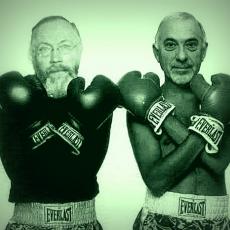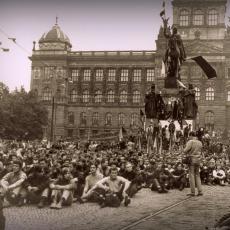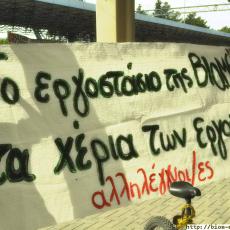Between Ignorance and Staging
Review by Ralf Hoffrogge
Henning Fischer, Uwe Fuhrmann, Jana König, Elisabeth Steffen, Till Sträter (eds.):
Zwischen Ignoranz und Inszenierung: Die Bedeutung von Mythos und Geschichte für die Gegenwart der Nation (Between Ignorance and Staging: The Present Significance of Myth and History for the Nation)
Recent years have seen growing attention directed towards the history of collective memory and memorial culture, giving way to the insight that historical memory has less to do with an objective truth regarding the past than with the representation of historical themes that are caught up in present concerns.
Ever since the professionalization of historical research in the 18th and 19th centuries, the stage for such representations has been the nation state. The nation state was often perceived as an empty container in which history takes place. Even old and new labour historians have accepted this framework, for example, E.P. Thompson in his brilliant "Making of the British Working Class".
While a new approach towards a "Global Labour History" by Marcel van der Linden and others has challenged the national framework, and attempted to write a more inclusive history of the "Workers of the world", not much research has been done on the memory of labour and social movements. The first major attempt to do so is a pioneering conference publication bearing the title "The Memory of Labour and Social Movements: A Global Perspective " (Leipzig 2011), collecting presentations of the 46th annual ITH-Conference in Linz, Austria.
The publication Zwischen Ignoranz und Inszenierung combines a critique of national master narratives and original research on the influence of social movements on history and the way those movements are represented or ignored in collective memory.
Of the essays on German history, one deals with the national myths about Allied air-raids on the city of Dresden during the Second World War, another is on the German Reunification in 1989, and a third describes the invention of the Deutschmark in 1948. A fourth essay discusses the aftermath of the Spanish Civil War, describing the fight of a growing social movement since the year 2000 that challenges the common myths about a "Spanish tragedy" with crimes on both sides have been banished to oblivion in order to heal old wounds with the cure of forgetfulness.
A historiographical approach derived from the works of Walter Benjamin serves as a common framework for all the essays. Facing the rise of Nazi-Fascism, Benjamin challenged the all-too-optimistic foundations of classical historical materialism and demanded a history that does not portray victories along a road towards human progress but instead victims in a catastrophic continuum of violence which can only be interrupted by revolutionary events. A "benjaminian" historiography would therefore not only challenge national myths, but also question linear success stories of leftist origin, seeking out history’s unsuccessful strategies and movements for emancipation.
One such movement was the General Strike of 1948 in West Germany, described by Uwe Fuhrmann in the collection’s third essay. This strike is absent from most of the German historiography, and in collective memory. The remembered story is that in 1948 there was a currency-reform, designed by the economical mastermind Ludwig Erhard. This invention of the Deutschmark accompanied free-market reforms and the German Wirtschaftswunder brought an unprecedented economic boom that made a welfare state and consumer society in West Germany possible, while scarcity was the norm in the communist-governed eastern half of the country.
Fuhrmann challenges this narrative by telling the story of the 1948 protest movement against the free-market reforms. The combination of an official wage-block in place since the Nazi Era and not lifted by the allied military institutions with free ranging prices caused a social disaster. Working-and middle-class families were unable to afford basic food items, not to mention the luxury goods displayed in store windows since the introduction of the Deutschmark. Public discontent was followed by public protests in the second half of 1948, culminating in a General Strike of nine million workers - the largest strike in German history. Fuhrmann concludes that only because of this fulminant display of working-class protest, West German leadership was forced to introduce certain welfare-state measures and regulations to the newborn free-market regime. Soziale Marktwirtschaft (social market economy) was born and became one of the strongest collective myths shared by the German people up to the very present
Another such myth is the German Reunification. Its strong link with the desire of the East German population for consumer goods in the popular imagination, led to the idea that a liberal-capitalist outcome was the natural result of the wave of protest that started in East Germany in 1989. Elisabeth Steffen and Jana König confront this popular perception with the fact that among East German artists, intellectuals, and activists there was a strong movement for a socialist transition instead of a capitalist one - leading to several discussions about democratic socialism which were all discarded in 1990.
A more recent social movement is analyzed by Till Sträter, who portrays the recent "Memory-Movement" in Spain and describes that the most effective challenge to national myths is not academic deconstruction, but a popular movement. In Spain, this movement is carried out mainly by the grandchildren of the victims of the Franco-Regime. They fulfill a task forbidden to their parents in the immediate aftermath of the transicion to democracy in 1975. Because of an agreement between the regime and the opposition, democratic change was only allowed to happen if there was also amnesty for the followers of Franco and a ban on talking about the victims. Fearing a second civil war, socialists, communists, and republicans gave in to this consensus that shapes the collective memory of Spain up to the present.
The fourth essay, written by Henning Fischer, confronts the German self-perception as a "nation of victims," seduced by the demonic figure of Adolf Hitler and then collectively punished by the terror of war, embodied by the Allied air raids. The most well-known symbol of this national myth is the city of Dresden, which was almost totally destroyed by British and American air strikes in February 1945. Fischer confronts the myth of Dresden as a victim with the reality of Dresden as an important military and administrative Center in Nazi-Germany, in which Hitler’s Party had especially strong roots and whose Jewish citizens were mostly evicted or killed when the air strikes hit. Fischer carefully points out how the role of Dresden as part of the Nazi-state was erased from history and replaced by the myth of an innocent cultural center and its destruction.
The four essays are framed by an introduction and a conclusion that reflect on general aspects of historical memory, raising the question of whether there are ways of political intervention on the field of collective memory that avoid the construction of new or "progressive" myths. These theoretical reflections are very interesting, the volume has therefore a much better conceptual framework than many other collections being published in the field of historical research. On the other hand the theoretical parts can sometimes become repetitive, echoing the methodological material covered in each of the essays.
For a non-German audience, the volume is therefore strongest in its empirical parts when it researches the interaction of historical events and historical memory in exemplary cases.
Henning Fischer, Uwe Fuhrmann, Jana König, Elisabeth Steffen, Till Sträter (eds.):
Zwischen Ignoranz und Inszenierung: Die Bedeutung von Mythos und Geschichte für die Gegenwart der Nation (Between Ignorance and Staging: The Present Significance of Myth and History for the Nation)
Publisher: Westfälisches Dampfboot, Münster (Germany) 2012
205 pages
€ 19,90





